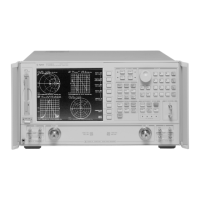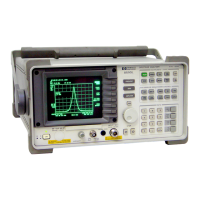7- 34
Operating Concepts
Analyzer Display Formats
Figure 7-17 Variations in Frequency Aperture
In determining the group delay aperture, there is a trade-off between resolution of fine detail and the effects
of noise. Noise can be reduced by increasing the aperture, but this will tend to smooth out the fine detail.
More detail will become visible as the aperture is decreased, but the noise will also increase, possibly to the
point of obscuring the detail. A good practice is to use a smaller aperture to assure that small variations are
not missed, then increase the aperture to smooth the trace.
The default group delay aperture is the frequency span divided by the number of points across the display. To
set the aperture to a different value, turn on smoothing in the average menu, and vary the smoothing
aperture. The aperture can be varied up to 20% of the span swept.
Group delay measurements can be made on linear frequency, log frequency, or list frequency sweep types
(not in CW or power sweep). Group delay aperture varies depending on the frequency spacing and point
density, therefore the aperture is not constant in log and list frequency sweep modes. In list frequency
mode, extra frequency points can be defined to ensure the desired aperture.
To obtain a readout of aperture values at different points on the trace, turn on a marker. Then press
. Smoothing aperture becomes the active function, and as the aperture is
varied its value in Hz is displayed beneath the active entry area.

